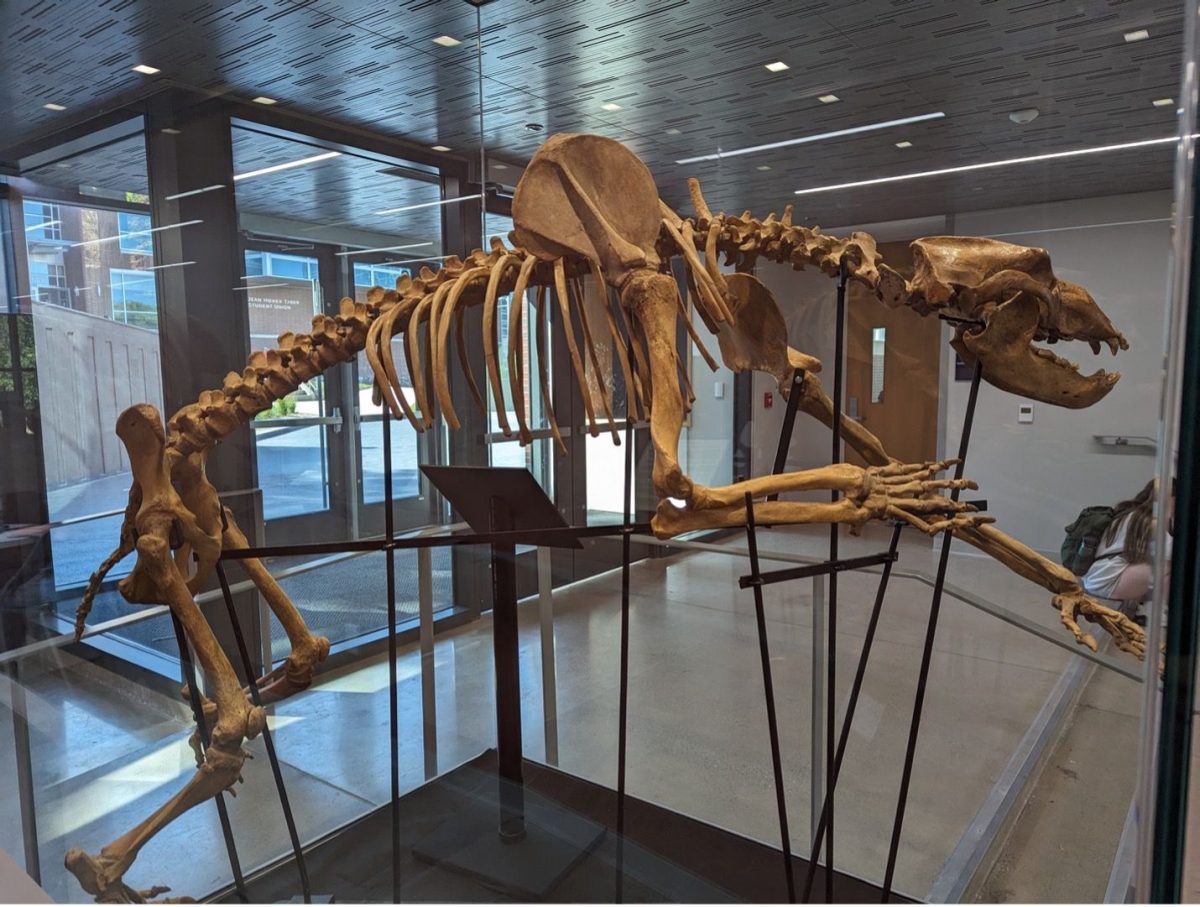By: Matthew Balsinger
The University of Akron is home to many hidden treasures that students may or may not be aware of. The Geology Department, located in Crouse Hall, is home to a mastodon skeleton found nearly 45 years ago in Fairlawn, Ohio.
The specimen was originally found during a construction project and was first analyzed by University of Akron geologists Jim Teeter and Paul Wingard. The geologists would end up spending several months with students uncovering as much of the animal as they could find, which is now still on display at the University.
Mastodons were large tusked mammals, much like the elephants of today, which roamed the earth from the Oligocene to the Pleistocene, about 32 million to 11,000 years ago. They went extinct at the end of the last ice age. Mastodons were larger than mammoths and are thought to have had minor differences in habitual characteristics than other similar mammals.
Based on the bones found at the site, University experts estimated that the Fairlawn Mastodon was a juvenile that stood about eight feet tall and weighed around 7,000 pounds. Teeter believes that the mastodon got stuck in the mud of a glacial lake and died. Evidence of the mastodon’s age is that the bones found had not yet fused, and the location was surmised from the composition of sediment around the remains which resembled an early glacial lake.
The National Science Foundation gave The University of Akron a $28,000 grant to conduct the excavation, which is equivalent to about $200,000 today. The Fairlawn Mastodon is still used for the purpose of education.
Fossils of different species of mastodon have been found on four different continents, including Africa, North America, Asia and Europe. Though they appear much as modern elephants do today, they were only superficially similar. Mastodons had distinctly different high-crowned teeth which were better suited for grazing; larger, flatter skulls and skeletal structures that were more robust made them considerably stronger.
Experts do not know the exact reason for the extinction of the mastodons at the end of the last ice age. The leading theory proposes that the mastodons went extinct because of over-hunting by the early Paleo-Indians.











